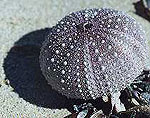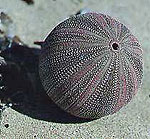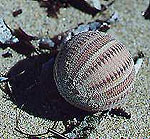|
Species level diversity refers to the number of different species on earth. At present the count is approaching 1.8 million living species, with estimates of the actual count varying between 5 million and 100 million.
Being able to recognise all 1.8 million species is an impossible task for a single person but getting to know some of your local marine life is achievable, especially if you have access to good field guides, such as these two guides to marine life on the temperate shores of southern Australia.
Davey, K 1998, A Photographic Guide to Seashore Life of Australia. New Holland Publishers
Edgar, G. J. 1997, Australian Marine Life Reed.
Anyone who does try to become familiar with the common sea shore animals will soon realise that the great diversity of Australian marine life may initially make this a daunting task but one well worth persevering with.
Species Count
|
Once you and your students have become familiar with marine life on local shores, say a rocky shore, try drawing up simple lists of the range of species present. This list may be relatively simple at the start but will hopefully grow and become more refined as work continues.
Because work on your species list involves fieldwork, please remember to take note of the safety issues briefly discussed in the Marine Biodiversity Activities section. |

Purple sea urchin
Heliocidaris erythrogramma
|
Virtual Biodiversity
|
Although most of us, and certainly most of our students, would much prefer to carry out field work, species level biodiversity is alive and well and easily assessable on the world wide web.
For those who may find field work impractical or those who would like to follow-up on field work, the Resources section provides a guide to web sites that will allow you and your students to delve into 'virtual' exploration of Australia's marine biodiversity. |

Inflated sea urchin
Holopneustes inflatus |
Beachcombing
|
Beachcombing is one way to explore species diversity without getting wet. Shown above and to the right are three examples of sea urchin tests commonly washed onto southern Australian shores.
How many sea urchin species can you find?
|

Zig zag sea urchin
Amblypneustes formosus |
Next: Diversity at the ecosystem level
|